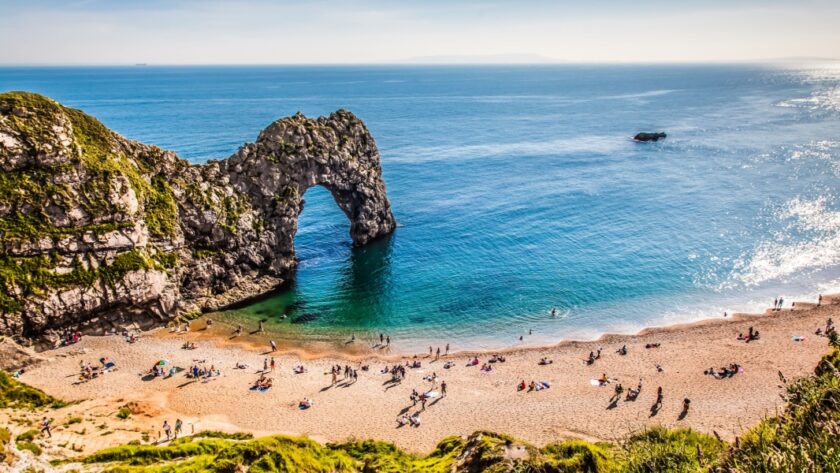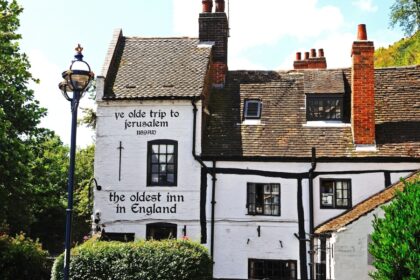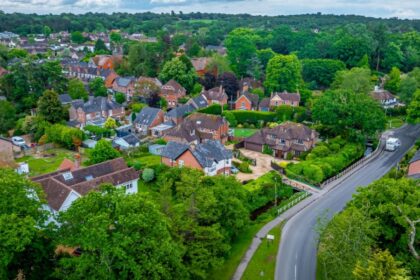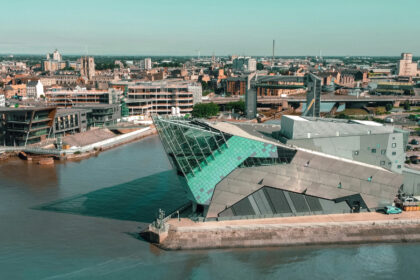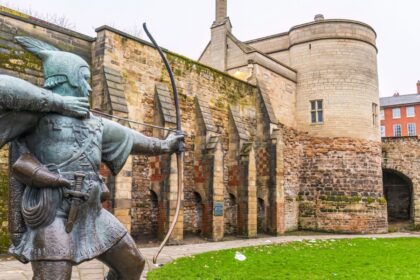Down in the southwest, where the cliffs get tall and the lanes get narrow, you find Dorset. It is a county that seems to have arranged itself very carefully for scenic drives and long walks, with just enough history, geology and good pubs to keep things interesting. Dorset does not shout for attention but it rarely disappoints.
Here you get chalk hills, crumbling cliffs, fossil-filled beaches and countryside that has been gently pottering along for centuries. It feels quietly self-assured, as though it knows full well how nice it all is.
Jurassic Coast, fossils and rocks that go back a bit
Dorset’s most famous feature is its coastline, officially known as the Jurassic Coast, which is a polite way of saying that quite a lot of it is slowly falling into the sea. As the cliffs erode, fossils that have been hiding for 185 million years pop out and make their way into the hands of eager collectors.
Lyme Regis is the best-known fossil hunting spot, made famous by Mary Anning, who spent her life finding remarkable specimens that now sit in museums all over the world. The town itself remains charming, with its cobbled streets, harbour wall known as The Cobb, and plenty of places to buy a hammer and hope for the best.
Arches, stacks and coastal drama
Further east along the coast you find some of England’s most photographed rock formations. Durdle Door arches gracefully into the sea, while nearby Lulworth Cove looks as though someone designed it on a particularly good day. The coastal path offers endless views and a decent workout, depending on how many steep bits you optimistically tackle.
The cliffs of Old Harry Rocks mark the eastern end of the Jurassic Coast, standing like giant white teeth against the blue of the sea.
Castles, rebellions and literary connections
Dorset’s inland history has its share of drama too. Corfe Castle sits in romantic ruins, looking every inch the textbook medieval fortress, thanks to being blown up during the English Civil War. The village beneath it remains as photogenic as ever, complete with stone cottages, tearooms and an extremely determined population of ducks.
Further inland lies the market town of Dorchester, famously associated with Thomas Hardy, who reimagined the area as ‘Wessex’ in his novels. You can visit his birthplace, his later home, and quite a few locations that pop up in his slightly gloomy but deeply admired books.
Seaside towns and Victorian charm
Dorset’s seaside towns offer a more relaxed alternative to the louder resorts further along the coast. Weymouth comes with a broad sandy beach, pastel-coloured Georgian terraces and a harbour that looks particularly good at sunset. Swanage, tucked into its own bay, still has a heritage steam railway that puffs its way rather pleasingly through the countryside.
Smaller places like West Bay, with its towering cliffs, and Charmouth, perfect for fossil hunting, reward those willing to explore a little further.
Rolling hills, chalk giants and very small lanes
Inland Dorset is a quietly beautiful tangle of fields, hedgerows and chalk hills. The Cerne Abbas Giant, carved into a hillside, remains one of England’s more puzzling landmarks. Whether fertility symbol, ancient figure or 17th-century prank, it has certainly attracted its fair share of curious glances.
The narrow country lanes seem specifically designed to challenge the confidence of visiting drivers, but they lead to some of the prettiest villages you are likely to find.
Where time drifts at a comfortable pace
Dorset does not rush. It offers cliffs that crumble on their own schedule, villages where the biggest drama is often the village fête, and beaches where the fossil hunters quietly scan the stones. After a while, you settle into Dorset’s rhythm and start to wonder whether you really need to be anywhere else.

